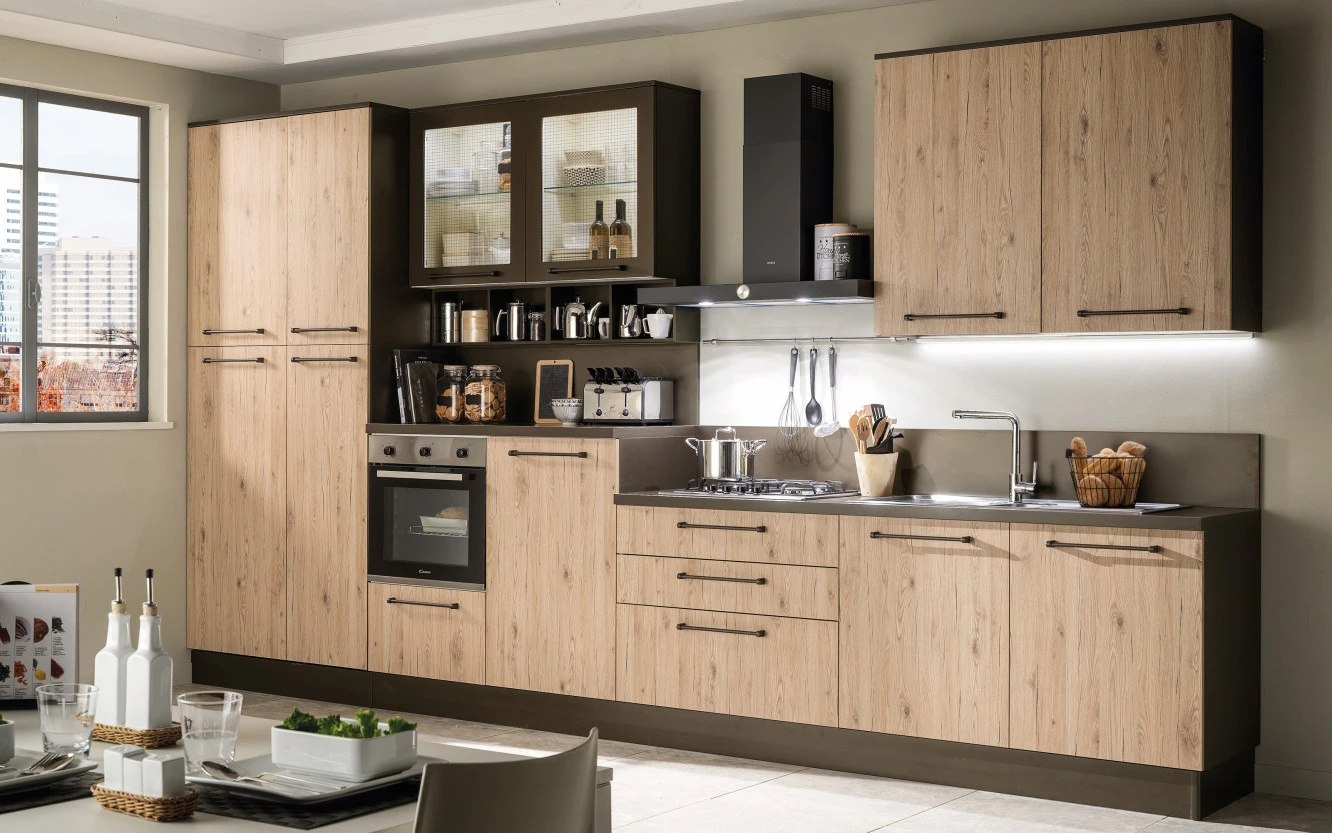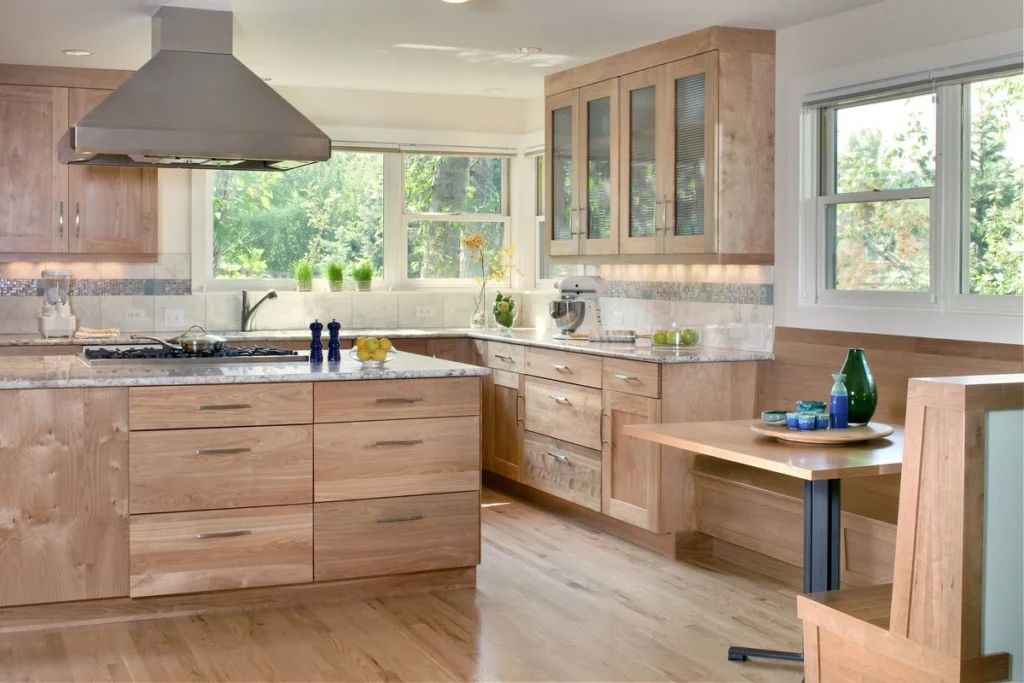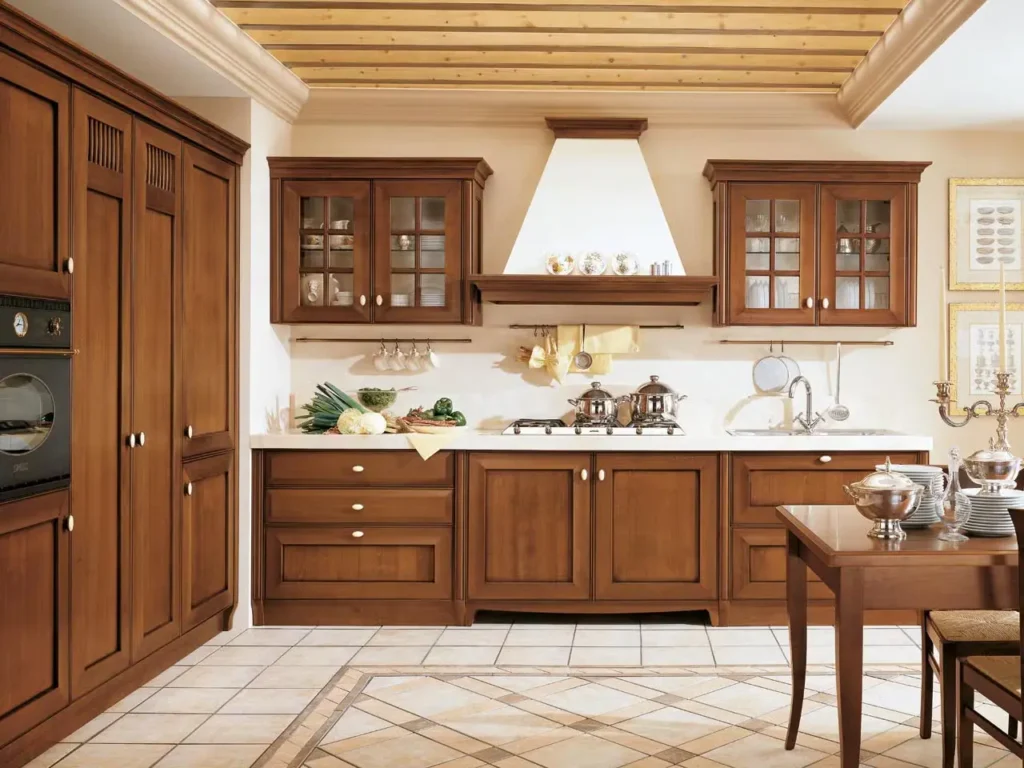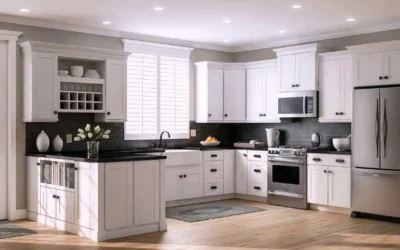When planning a kitchen renovation, it’s no surprise that wood kitchen cabinets often become the centrepiece of discussions and the budget. However, if you’ve received multiple quotes, you might be puzzled by the drastic price differences. Why do some cabinets seem affordable while others feel out of reach?
The cost of wood kitchen cabinets is influenced by a variety of factors, from the material and construction quality to the level of customisation and finishing touches. Understanding these elements allows Ontario homeowners to make smarter decisions, balancing budget constraints with their dream kitchen goals.
This guide breaks down eight key factors that drive the cost of wood kitchen cabinets, so you can make informed choices for your renovation project.
1. Type of Wood
The type of wood you choose greatly impacts the cabinet cost, as different species vary in both durability and appearance. Here’s a breakdown of common wood types and how they compare:
- Pine
One of the most affordable options, pine is soft and more prone to dents or scratches. While budget-friendly, its lighter durability may limit its long-term appeal.
- Maple
Known for its smooth grain and strength, maple offers a balance of aesthetics and longevity at a moderate price. It’s versatile and works well with both natural finishes and paints.
- Cherry
Cherry wood is a premium choice, offering rich natural hues that deepen with age. Its luxurious appearance comes with a higher price tag, ideal for homeowners seeking an upscale finish.
- Walnut
Known for its dark, elegant tones, walnut cabinets are an investment piece. Its high cost reflects its unmatched beauty, durability, and rarity.
Pro Tip
Choose a wood type that balances your aesthetic preferences with your budget. Maple, for example, is a versatile mid-range option, while cherry or walnut works well for premium finishes.
2. Construction Quality
Not all cabinets are made equal. The construction quality can significantly alter the price point and durability of wood kitchen cabinets. Here’s what to consider:
- Framed vs Frameless
Frameless cabinets popular in contemporary designs offer a sleek, modern look but demand precise construction techniques, often inflating costs. Framed cabinets, on the other hand, are more budget-friendly and align well with traditional styles.
- Solid Wood vs MDF
Solid wood is durable and timeless but comes at a higher cost. Many budget-conscious homeowners choose MDF (Medium-Density Fibreboard) for cabinet interiors, as it mimics solid wood while being more affordable.
- Premium Joinery
High-quality joinery methods, such as dovetail joints, ensure the cabinets hold up over time. While these techniques increase costs, their durability pays off, especially in a frequently used space like the kitchen.
Pro Tip
If you’re aiming to control costs, consider a hybrid solution, using solid wood for cabinet doors with MDF interiors for affordability.
3. Level of Customisation
Cabinetry can range from budget stock options to fully custom masterpieces. The level of customisation strongly influences cost:
Offering limited styles, sizes, and finishes, stock cabinets are the most affordable option. They are mass-produced and typically ready for quick installation, making them appealing for tight timelines.
- Semi-Custom Cabinets
These provide a middle ground, allowing some size adjustments and design choices like finishes and hardware. Although pricier than stock cabinets, they combine customisation with reasonable cost.
- Custom Cabinets
Tailored to your kitchen layout, custom cabinets offer endless design possibilities. From unique dimensions to intricate detailing, they are perfect for unconventional spaces but come at a premium price.
Pro Tip
Opt for semi-custom cabinets if you’re looking for flexibility without fully custom costs, especially if you have a standard kitchen layout.
4. Cabinet Finish
The finish of your wood cabinets influences both the price and their final look. Here are the options and costs to consider:
- Painted Finishes
Painted cabinets are more expensive than stained options, partly due to the extra labour involved in creating a smooth, even coat.
- Stains
Stained finishes highlight the natural grain of the wood, making them a cost-effective choice for mid-range budgets.
- Glazes and Distressing
Specialty finishes like glazing or distressing add unique character to your cabinets but result in higher material and labour costs.
Pro Tip
Stained finishes often provide the best value, combining aesthetics with durability, particularly for wood species like maple or oak.
5. Cabinet Style
Cabinet door design is another significant factor affecting costs. The complexity of the style can drive up labour requirements and materials. Common styles include:
- Shaker
A simple, clean-lined choice, shaker doors are a timeless and cost-effective option suitable for various aesthetics.
- Raised Panel
Adding a touch of elegance, raised panel doors require more craftsmanship, increasing their price.
- Slab
Perfect for modern kitchens, slab doors are sleek and minimalist. They are often cost-effective due to their straightforward construction.
- Inset Doors
Offering a premium look, inset doors sit flush with the cabinet frame but involve greater precision and labour, making them the most expensive option.
Pro Tip
Shaker-style cabinets often strike an excellent balance between elegance and affordability.
6. Hardware & Accessories
Cabinet hardware and internal accessories can make or break both the functionality and the final cost of your cabinets. Consider these options:
- Soft-Close Hinges & Drawer Slides
These premium features add convenience and longevity but come at a higher price.
- Handles and Knobs
High-end hardware in materials like brushed nickel or brass can elevate the look but increase costs significantly.
- Organisers & Pull-Outs
Add-ons like pull-out spice racks, trash bins, or cutlery organisers boost functionality but also add $50-$500 to the base cabinet cost.
Pro Tip
Invest in soft-close mechanisms for frequently used areas like main drawers while opting for standard hardware in less-used spaces.
7. Installation Costs
Labour costs for professional installation vary widely across Ontario. Factors that influence pricing include:
- Kitchen Size
Larger kitchens require more cabinets and longer installation times, increasing costs.
- Layout Complexity
Kitchens with islands, pantry walls, or angled cabinets demand more precision and labour.
- Labour Availability
Labour shortages or surges in local demand can also impact installation fees.
Pro Tip
Plan your renovation during off-peak seasons (fall or winter) to avoid contractor busy periods and secure better rates.
8. Kitchen Size & Layout
Naturally, the size and layout of your kitchen determine how many cabinets are required, and therefore, the overall material and labour costs. L-shaped kitchens, for example, often need more corner cabinets, which are custom-fitted and pricier than standard boxes.
Pro Tip
Work with a professional designer to optimise your layout and minimise unnecessary customisations.
Conclusion
The cost of wood kitchen cabinets depends on a myriad of factors, from the choice of wood species and construction quality to finishes, hardware, and installation complexity. By understanding these elements, you can effectively balance your budget without compromising on quality or style.
Take Control of Your Kitchen Budget
Looking for expert help to plan your cabinetry within a budget that works for you? Get a personalised estimate from Kabinetry.ca, your trusted Ontario custom cabinetry specialists. Transform your vision into reality with high-quality, tailored solutions. Contact us today!






